Related Research Articles
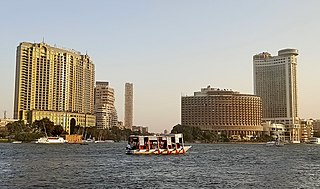
Cairo is the capital of Egypt and the largest city in the Arab world. The Greater Cairo metropolitan area, with a population of 21.3 million, is the second largest urban agglomeration in Africa, the largest in the Arab world and the Middle East, and the sixth-largest in the world by population. Cairo is associated with ancient Egypt, as the Giza pyramid complex and the ancient city of Memphis are located in its geographical area. Located near the Nile Delta, Cairo was developed in 969 AD during the Fatimid dynasty, but the land composing the present-day city was the site of Ancient National Capitals whose remnants remain visible in parts of Old Cairo. Cairo has long been a centre of the region's political and cultural life, and is titled "the city of a thousand minarets" for its preponderance of Islamic architecture. Cairo's historic center was awarded World Heritage Site-status in 1979. Cairo is considered a World City with a "Beta +" classification according to GaWC.

Egypt has long been the cultural and informational centre of the Middle East and North Africa, and Cairo is the region's largest publishing and broadcasting centre.
In computer networking, peering is a voluntary interconnection of administratively separate Internet networks for the purpose of exchanging traffic between the "down-stream" users of each network. Peering is settlement-free, also known as "bill-and-keep," or "sender keeps all," meaning that neither party pays the other in association with the exchange of traffic; instead, each derives and retains revenue from its own customers.
Fibre-optic Link Around the Globe (FLAG) is a 28,000-kilometre-long fibre optic mostly-submarine communications cable that connects the United Kingdom, Japan, India, and many places in between. The cable is operated by Global Cloud Xchange, a subsidiary of RCOM. The system runs from the eastern coast of North America to Japan. Its Europe-Asia segment was the fourth longest cable in the world in 2008.
The Cairo Regional Internet Exchange (CRIX) is an Internet Exchange Point which was formed in Cairo, Egypt by a joint venture between the National Telecom Company (NTC) and its subsidiary ECC Solutions along with the Indian FLAG Telecom. The exchange was officially inaugurated in Cairo on December 18, 2002 by the then Minister of Communications & Information Technology, later Prime Minister Ahmed Nazif.

Ramses Railway Station, also called Misr Station, is the main railway station of Cairo, Egypt. The name is derived from the Ancient Egyptian Pharaoh Ramses II, whose statue was erected by Nasser on the square there in 1955.
Transport in Cairo comprises an extensive road network, rail system, subway system and maritime services for the more than 15.2 million inhabitants of the city. Cairo is the hub of almost the entire Egyptian transport network.
Vodafone Egypt is the largest mobile network operator in Egypt in terms of active subscribers. It was launched in 1998 under its former name Click GSM. It covers various voice and data exchange services, as well as 4G, 3G, ADSL and broadband Internet services.

The Statue of Ramesses II is a 3,200-year-old figure of Ramesses II, depicting him standing. It was discovered in 1820 by Giovanni Battista Caviglia at the Great Temple of Ptah near Memphis, Egypt. It is made from red granite and weighs 83 tons.
Ramses Wissa Wassef (1911–1974) was an Egyptian Coptic architect and professor of art and architecture at the College of Fine Arts in Cairo and founder of the Ramses Wissa Wassef Art Centre.
Telecom Egypt, is Egypt's primary telephone company. It started in 1854 with the first telegraph line in Egypt. In 1998, it replaced the former Arab Republic of Egypt National Telecommunication Organization (ARENTO).
The Internet in Egypt is an important part of daily life, as a majority of the population has access to the Internet, via smartphones, Internet cafes, or at home. Broadband Internet access via VDSL is widespread. However, Internet censorship and surveillance was severe under the rule of Hosni Mubarak, culminating in a total shutdown of the Internet in Egypt during the 2011 Revolution. Though Internet access was restored following Mubarak's order, government censorship and surveillance have increased since the 2013 coup d'état, leading U.S. NGO Freedom House to downgrade Egypt's Internet freedom ranking from "partly free" in 2011 to "not free" in 2015.
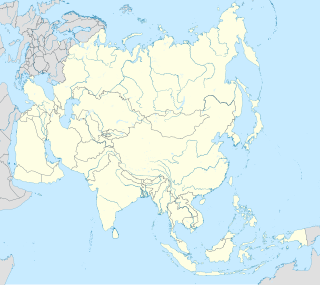
The 2008 submarine cable disruptions were three separate incidents of major damage to submarine optical communication cables around the world. The first incident caused damage involving up to five high-speed Internet submarine communications cables in the Mediterranean Sea and Middle East from 23 January to 4 February 2008, causing internet disruptions and slowdowns for users in the Middle East and India. The incident called into doubt the safety of the undersea portion of the Internet cable system.

Mataria is a district in the northern region of Greater Cairo, east of the Nile, in Egypt. The district is unrelated to the coastal town in the Dakahlia Governorate, that is also named El Matareya. The district's location was part of the ancient city of Heliopolis, one of the oldest cities of ancient Egypt.

Tahrir Square, also known as "Martyr Square", is a major public town square in downtown Cairo, Egypt. The square has been the location and focus for political demonstrations in Cairo, most notably those that led to the 2011 Egyptian revolution and the resignation of President Hosni Mubarak.
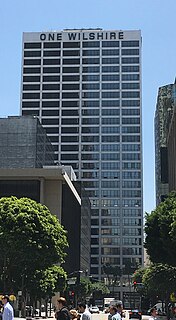
One Wilshire is an office building located at the junction of Wilshire Boulevard and South Grand Avenue in downtown Los Angeles. Notwithstanding the building's name, its actual address is 624 S. Grand Avenue. Built in 1966, the thirty story high-rise was designed by Skidmore, Owings and Merrill, and for its first decades in existence it was used almost exclusively by law firms. In the early 1990s it began housing largely telecommunications companies, and in 1992 One Wilshire underwent a major renovation, with the improvements largely related to telecommunication network upgrades. Around this time a large meet-me room was constructed on the fourth floor, and in 2008 Wired claimed that One Wilshire had "the world's most densely populated Meet-Me room", with around 260 ISPs with interconnected networks.

Smart Village is a high-technology business district in the city of 6th of October, Egypt, established by Presidential Decree no.355 in 2000, with activities starting in 2001. It is located on the Cairo-Alexandria Desert Road, slightly west of Cairo. Smart Village occupies an area of 450 feddans. It's a business district with office buildings, retail shops, entertainment, factories and green spaces.
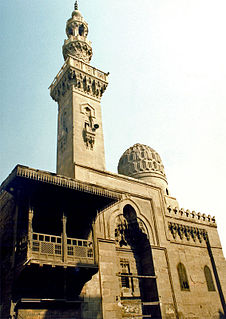
The Funerary Complex of Amir Taghribirdi or Mosque and Madrasa of Taghribirdi is a historical funerary complex of a mosque and madrasa located in Cairo, Egypt and built in the year 1440, during the Mamluk Sultanate. This monument honors Amir Taghribirdi, the mosque's commissioner and the secretary to Sultan al-Zahir Jaqmaq. The mosque and madrasa of Taghribirdi is located on a corner of Saliba street. This is not to be confused with a different Mosque of Taghribirdi, which is located in the Darb al-Maqasis neighborhood of Cairo.
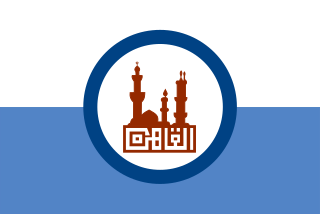
The following outline is provided as an overview of and topical guide to Cairo:
References
- ↑ James Glanz and John Markoff (February 15, 2011). "Egypt Leaders Found 'Off' Switch for Internet". New York Times. Quote: "The engineers say that a focal point of the attack was an imposing building at 26 Ramses Street in Cairo, just two and a half miles from the epicenter of the protests, Tahrir Square."
- ↑ Ryan Singel (February 10, 2011). "Report: Egypt Turned Off the Net With a Big Switch, Not Phone Calls". Wired.
- ↑ "Google Maps aerial view of the Ramses Exchange".
- ↑ Cairo Internet Exchange FAQ
- ↑ CAIX Member List
- ↑ Telecom, FLAG. "FLAG Telecom announces launch of CR-IX, the new internet exchange in Egypt -collaboration with National Telecom Company establishes new internet exchange for the region". www.prnewswire.co.uk. Retrieved 2018-08-13.
- ↑ "Detail view of Cairo Regional Internet Exchange". Packet Clearing House.